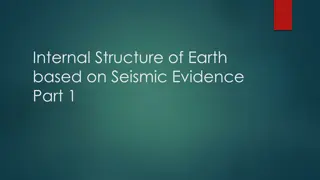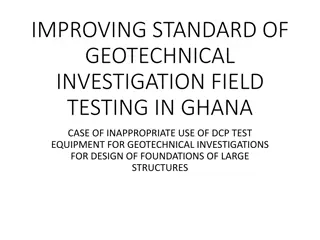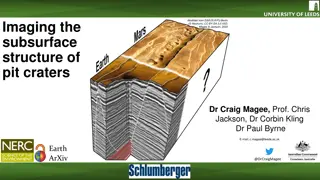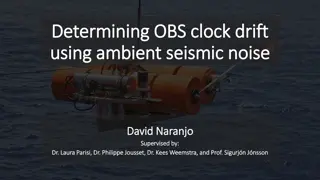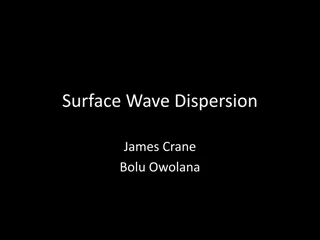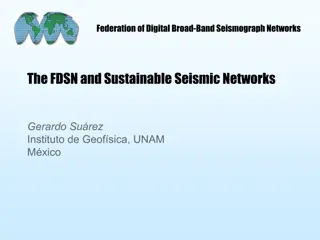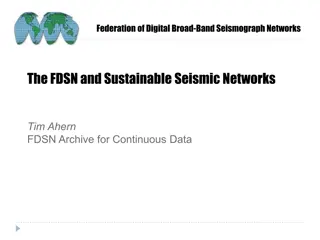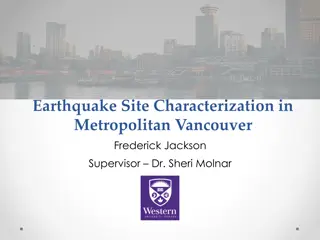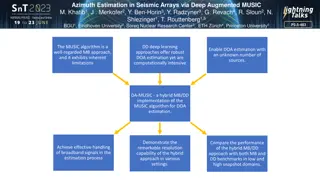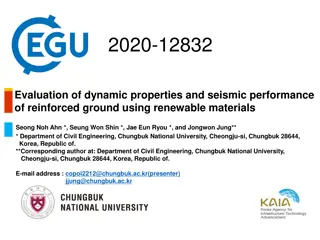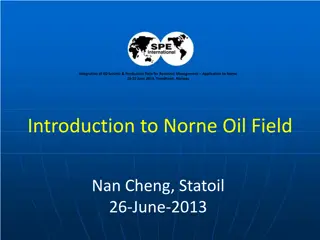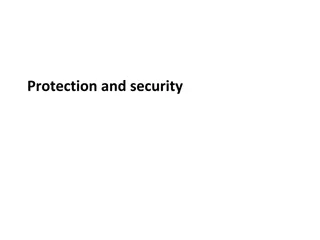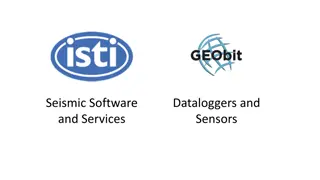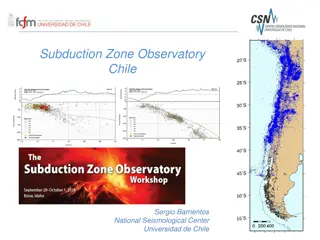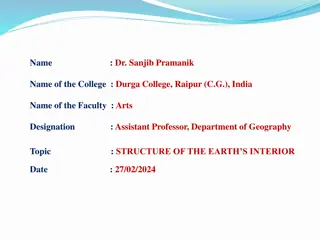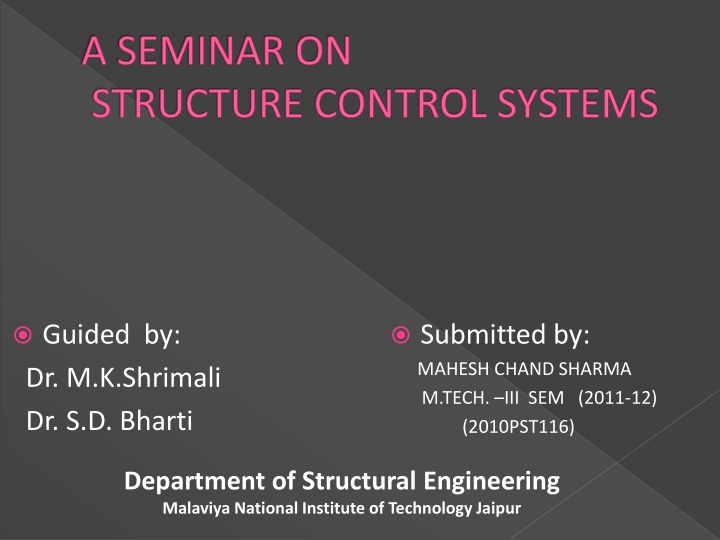
Seminar on Structure Control Systems - Seismic Protection & Response
Civil environments prone to earthquakes or strong wind forces face vibrations that can lead to structural damage. Learn about traditional and modern techniques for seismic protection, including passive, active, semi-active, and hybrid control systems.
Download Presentation

Please find below an Image/Link to download the presentation.
The content on the website is provided AS IS for your information and personal use only. It may not be sold, licensed, or shared on other websites without obtaining consent from the author. If you encounter any issues during the download, it is possible that the publisher has removed the file from their server.
You are allowed to download the files provided on this website for personal or commercial use, subject to the condition that they are used lawfully. All files are the property of their respective owners.
The content on the website is provided AS IS for your information and personal use only. It may not be sold, licensed, or shared on other websites without obtaining consent from the author.
E N D
Presentation Transcript
A SEMINAR ON STRUCTURE CONTROL SYSTEMS Guided by: Dr. M.K.Shrimali Dr. S.D. Bharti Submitted by: MAHESH CHAND SHARMA M.TECH. III SEM (2011-12) (2010PST116) Department of Structural Engineering Malaviya National Institute of Technology Jaipur
INTRODUCTION Civil environments where earthquakes or large wind forces are common will be subjected to serious vibrations during their lifetime. These vibrations can range from harmless to severe with the later resulting in serious structural damage and potential structural failure. engineering structures located in
Seismic Protection of Structures The Traditional Technique of a seismic Design ( increase the stiffness of structures by enlarging the section of columns, beams, shear walls, or other elements) Modern Approach through Structural Controls (by installing some devices, mechanisms, substructures in the structure to change or adjust the dynamic performance of the structure)
Basic Principles of Seismic Response Control Control systems add damping to the structure and/or alter the structure s dynamic properties. Adding damping increases the structural energy- dissipating capacity, and altering structural stiffness can avoid resonance to external excitation, thus reducing structural seismic response.
Structure Control systems 1.Passive control systems 2.Active Control systems 3.Semi-active control systems 4.Hybrid control systems
Passive control systems The passive control system does not require an external power source and being utilizes the structural motion to dissipate seismic energy or isolates the vibrations so that response of structure can be controlled
The passive control devices includes 1. Base Isolation 2. Passive Energy Dissipating (PED) Devices
Base Isolation A building mounted on a material with low lateral stiffness, such as rubber, achieves a flexible base. During the earthquake, the flexible base is able to filter out high frequencies from the ground motion and to prevent the building from being damaged or collapsing - deflecting the seismic energy and - absorbing the seismic energy
Behavior of Building Structure with Base Isolation System Conventional Structure Base-Isolated Structure http://www.earthquakeprotection.com.
Various Type of Base Isolation Elastomeric Bearings: -Low-Damping Natural or Synthetic Rubber Bearing - High-Damping Natural Rubber Bearing - Lead-Rubber Bearing (Low damping natural rubber with lead core) Sliding Bearings - Flat Sliding Bearing - Spherical Sliding Bearing
Elastomeric Bearings Major Components: - Rubber Layers: Provide lateral flexibility - Steel Shims: Provide vertical stiffness support building weight while limiting bulging of rubber - Lead plug: source of dissipation to lateral Provides energy http://www.earthquakeprotection.com.
Low Damping Natural or Synthetic Rubber Bearings Linear behavior in shear for shear strains up to and exceeding 100%. Damping ratio = 2 to 3% Advantages: - Simple to manufacture - Easy to model - Response not strongly sensitive to rate of loading, history of loading, temperature, and aging. Disadvantage: -Need supplemental damping system http://www.earthquakeprotection.com.
High-Damping Natural Rubber Bearings Damping increased by adding extra-fine carbon black, oils or resins, and other proprietary fillers Maximum shear strain = 200 to 350% Damping ratio = 10 to 20% at shear strains of 100% Effective Stiffness and Damping depend on: - Elastomer and fillers - Contact pressure - Velocity of loading - Load history (scragging) - Temperature http://www.earthquakeprotection.com.
Lead-Rubber Bearings damping properties can be improve by plugging a lead core into the bearing damping of the lead-plug bearing varies from 15% to 35%. The Performance depends on the imposed lateral force The hysteretic damping is developed with energy absorbed by the lead core. Maximum shear strain = 125 to 200% Design of structures with seismic isolation, in The Seismic Design Handbook , 2nd edition,
Sliding Bearings The imposed lateral force is resisted by the product of the friction coefficient and the vertical load applied on the bearing
Passive Energy Dissipating Devices (PED) Mechanical devices to dissipate or absorb a portion of structural input energy, thus reducing structural response and possible structural damage. Metallic Yield Dampers Friction Dampers Visco-elastic Dampers Viscous Fluid Dampers, And Tuned Mass Dampers And Tuned Liquid Dampers.
Metallic Yield Dampers Metallic yield damper: relies on the principle that the metallic device deforms plastically, thus dissipating vibratory energy http://www.earthquakeprotection.com.
Friction Dampers here friction between sliding faces is used to dissipate energy Instructional Material Complementing FEMA 451,
Visco-elastic Dampers Visco-elastic (VE) dampers utilize high damping from VE materials to dissipate energy through shear deformation. Such materials include rubber, polymers, and glassy substances. http://www.earthquakeprotection.com.
Viscous Fluid Dampers A viscous fluid damper consists of a hollow cylinder filled with a fluid. As the damper piston rod and piston head are stroked,The fluid flows at high velocities , resulting in the development of friction http://www.earthquakeprotection.com.
Tuned Mass Dampers And Tuned Liquid Dampers A mass that is connected to a structure by a spring and a damping element without any other support,in order to reduce vibration of the structure Tuned liquid dampers are similar to tuned mass dampers except that the mass-spring-damper system is replaced by the container filled with fluid
Tuned liquid dampers Tuned mass dampers http://www.earthquakeprotection.com.
Active Control systems In the active control, an external source of energy is used to activate the control system by providing an analog signal to it. This signal is generated by the computer following a control algorithm that uses measured responses of the structure
Types of Active Control systems Active Mass Damper Systems Active Tendon Systems Active Brace Systems
Active Mass Damper Systems It evolved from TMDs with the introduction of an active control mechanism. http://www.earthquakeprotection.com.
Active Tendon Systems Active tendon control systems consist of a set of pre-stressed tendons whose tension is controlled by electro- hydraulic servomechanisms http://www.earthquakeprotection.com.
Semi-active Control Systems It compromise between the passive and active control devices. the structural motion is utilized to develop the control actions or forces through the adjustment of its mechanical properties The action of control forces can maintained by using small external power supply or even with battery
Semi-active devices 1.Stiffness control devices 2.Electro-rheological dampers 3.Magnetorhelogical dampers 4.Friction control devices 5.Fluid viscous dampers 6.Tuned mass dampers 7.Tuned liquid dampers
Electro-rheological Dampers ER dielectric suspended within non- conducting viscous fluids the subjected to an electric field, the dielectric polarize and become aligned, thus offering resistance to the flow. fluids that contain particles When ER fluid is particles http://www.earthquakeprotection.com.
Stiffness control devices Modify: - the stiffness -the vibration characteristics natural So create a non- resonant condition during earthquake
Magneto-rheological Dampers MR fluid contains micron-size, magnetically particles dispersed in a viscous fluid polarizable When the MR fluid is exposed to a magnetic field, the particles in the fluid polarize, and the fluid exhibits visco- plastic behavior, thus offering resistance to the fluid flow. http://www.earthquakeprotection.com.
Hybrid control systems Combine controls system together Passive + Active Passive + Semi-Active Smart base-isolation Reduce external power requirement Improve reliability When loss of electric during earthquake, hybrid control can act as a passive control Reduce construction and maintenance costs due to active or semi-active
References: 1. Agrawal, A.K. and ang, J.N., Hybrid control of seismic response using nonlinear output feedback, in Proceedings of the Twelfth ASCE Conference on Analysis and Computation, Cheng, F.Y. (ed.), 1996, p. 339. 2. Aiken, I.D. and Kelly, J.M., Comparative study of four passive energy dissipation systems, Bulletin of New Zealand National Society of Earthquake Engineering, 25, 175, 1992. 3. Aiken, I.D. et al., Testing of passive energy dissipation systems, EERI Earthquake Spectra, 9, 335, 1993. 4. Aizawa, S. et al., An experimental study on the active mass damper, in Proceedings of the Ninth World Conference on Earthquake Engineering, International Association for Earthquake Engineering, Tokyo, 1988, V, p. 87l. 5. Akbay, A. and Aktan, H.M., Actively regulated friction slip braces, in Proceedings of the Sixth Canadian Conference on Earthquake Engineering, Toronto, Canada, 1991, p. 367.


